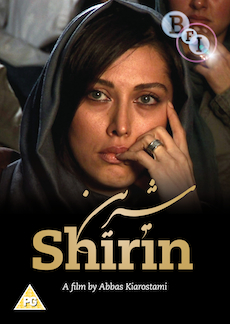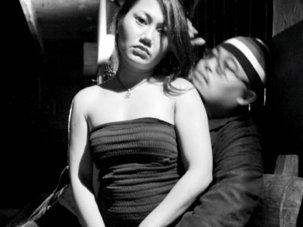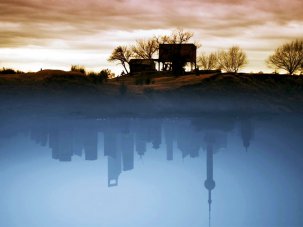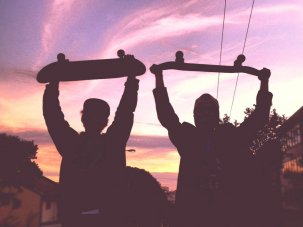Web exclusive
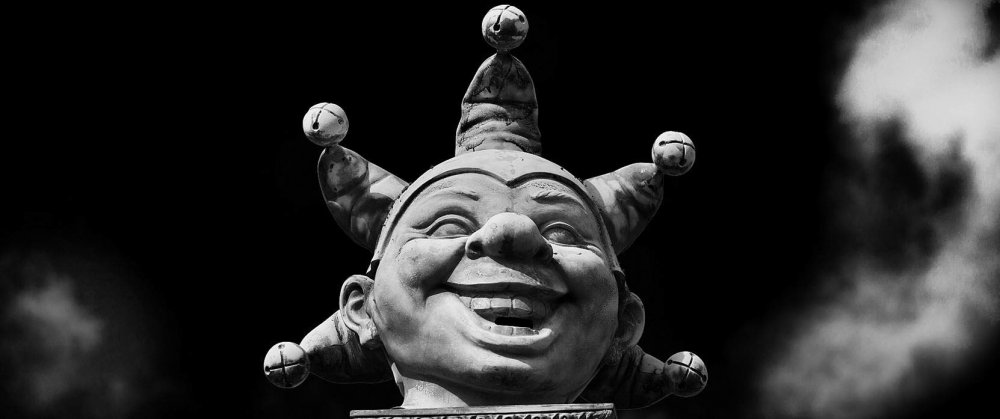
Visitors (2014)
If we reserve a special category for filmmakers deemed ‘uncategorisable’, Godfrey Reggio surely earns his place. Best known to date for the pioneering eco-conscious reverie of 1982’s Koyaanisqatsi, and two subsequent offerings (Powaqqatsi, Naqoyqatsi) in the so-called Qatsi Trilogy, his work is observational – in the sense that it’s about getting us to look at our world – yet can’t comfortably be viewed as traditional documentary, since these wordless feature-length constructions aren’t necessarily there to furnish us with information about specific issues.
Visitors is released in the UK on 4 April 2014 and is reviewed in the April 2014 issue of Sight & Sound.
They’ve certainly little to do with storytelling in any conventional sense, nor, notwithstanding the ministrations of their enveloping scores by Philip Glass (who’d never worked in film before Reggio got him on board), are they simply decorative aesthetic exercises in visual juxtaposition, playing beatific landscapes off against seductively captivating images of city life or workplace dehumanisation. Critics like to pillory Reggio for the trilogy’s seemingly reductive binary themes (old and slow is good, new and fast bad), but that’s presupposing the films are delivery systems for ideas, which is surely not the case. If Reggio’s work is ‘about’ anything, it’s about the experience of watching the films, and the particular emotional or perceptual response in each viewer, which may take them to a place where they can start working though for themselves the environmental or humanitarian subjects flagged up by what they see on screen.
The whole span of that interaction, obviously different for every viewer, is the essence of Reggio’s oeuvre, and not something easily synopsised. That’s particularly the case with the 73-year-old’s latest offering Visitors, shot in 4K black-and-white digital, where engrossing long-held portraits of adults and children, posed against pitch-dark backgrounds, play off similar sequences where we watch viewers interact with (unseen by us) handheld devices and TVs.
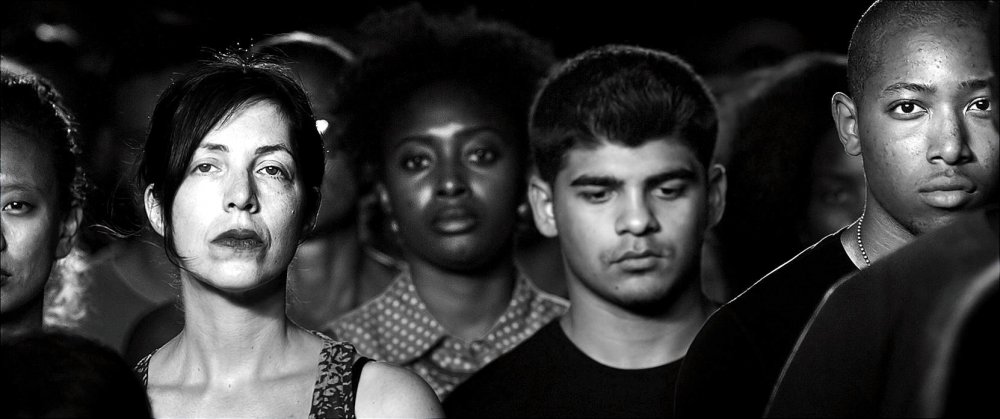
Visitors (2014)
Elsewhere, the potent presence of a female gorilla stares right towards us, while serene footage of Louisiana swamps, an abandoned amusement park and apartment block and even a computer-recreated lunar landscape slowly reveal themselves to the strains of a new Glass orchestral score in his latter-day tradition-meets-modern manner. It’s confounding, yet by being quite unlike anything you’ve seen before it positively encourages a fresh, in-the-moment reaction – exactly the sort of instinctive emotional response Reggio’s aiming to engender.
The cinephile hoping for some sort of purchase might grab at reference points including Kiarostami’s Shirin, Nicolas Philbert’s Nénette or even (ulp) Kubrick’s 2001, but a subsequent conversation with Reggio, speaking from his home in New Mexico, revealed no knowledge of the first two titles and a slightly bemused acknowledgement of his film’s tangential visual overlap with the third. Here’s someone who’s definitely more interested in making his own films than watching other people’s, and whose patient, considered, highly individual craft marks him out as a singular practitioner well aware his output will continue to divide opinion.
For someone who’s made startling use of speeded-up time-lapse in the past, presumably it’s a very deliberate choice for Visitors to unfold with only 74 shots in its 87 minutes?
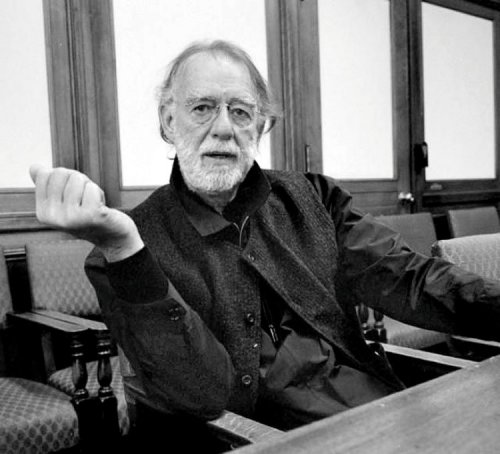
Godfrey Reggio
Yes, and it almost seems counter-intuitive to approach technological image-making in that way because it’s like everything’s on speed these days; as if the whole image culture is trying to outrun the future. Precisely because we’re always moving so fast, I wanted to do something that pertains to stillness. The stiller a person becomes the more heightened their senses may become. To be still allows a person to be with themselves, so the film becomes almost a deprogramming exercise to get us away from our electronic devices.
It’s something that’s confrontational for some viewers because they’re used to being grabbed by information: they come with a certain idea of what a movie should be, and Visitors doesn’t deliver that. My intention is to engage these triplets that reside inside all of us – sensation, emotion, perception – and that’s different for each person.
Those long portrait shots in the early part of the film put me in a state of heightened self-consciousness in a way I didn’t expect…
Well, I wanted to do something that shows us ourselves in a way we’re not otherwise likely to see. The idea really was the reciprocal gaze, and in order to achieve that there had to be absolutely no acting. That series of shots of individuals you’re talking about were done as a portrait sitting, so the subjects simply had to look at the camera, which was on a 22-foot dolly, racking focus very slowly as it moved towards them. The movement’s so gradual it’s not really perceptible to the viewer; it’s present but it’s hidden in plain sight. I’d say the whole modus operandi of the film is the moving still.
That sense of self-awareness in looking at a version of yourself is intensified when you show us people on their computers or phones, or the whole crowd watching something – perhaps a movie?
A sports bar. They knew they were being filmed, but the minute you turn the game on it’s like a tractor beam. The same for the children we filmed watching TV. There’s no acting involved because this is stuff we do every day. Put someone in front of a screen and it draws them out of their conscious selves, so those facial expression and automaticities of emotional response you see are all unselfconscious states.
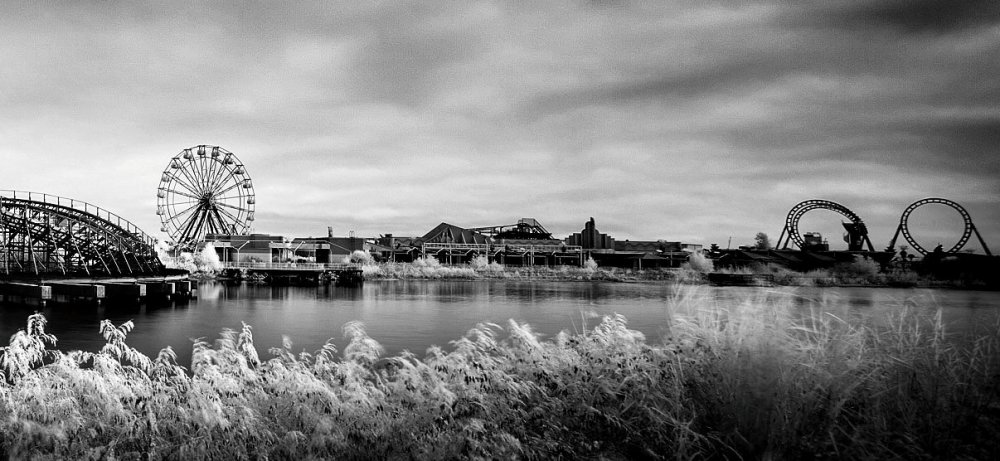
Visitors (2014)
Clearly the viewer will recognise herself in those sequences, but are we to draw connections between ourselves and the very striking gorilla you’ve also filmed?
As I mentioned, it’s seeing ourselves in a way we’re not otherwise likely to experience. That actually takes the form of three modalities in the film: the human, the primate and the cyborg transfixed by their electronic devices.
An inspiration for me was the anthropologist and poet Loren Eiseley, who said that we haven’t seen ourselves until we’ve been seen through the eyes of another animal. If you film a gorilla in a zoo because of those surroundings, it’s still just a gorilla. However, if you erase the background and have the subject present in what I call the ‘blackground’, it changes the whole dynamic: the object becomes the subject and the subject is now looking right at us.
Which is something only achievable by combining digital post-production and black-and-white images?
If you shoot in colour, everything tends to be contemporised, whereas black-and-white enhances the art-presence of the image, removing it from observation and allowing it to become more otherworldly. We wanted to go off-planet here and, of course, technically that ‘blackgound’ allows us to have the illusion of depth in a flat medium.
Stylistically, we’re in a different universe from Koyaanisqatsi. Were you dismayed when seemingly every bank and utility company ran TV ads with time-lapse images and Philip Glass Lite on the soundtrack?
That time-lapse technique had been around as long as the language of cinema, and you often saw it in scientific films as a way of re-seeing things in a way the eye couldn’t normally perceive. But then you had these bright young people being paid lots of money to look for new visual languages, and they came upon it.
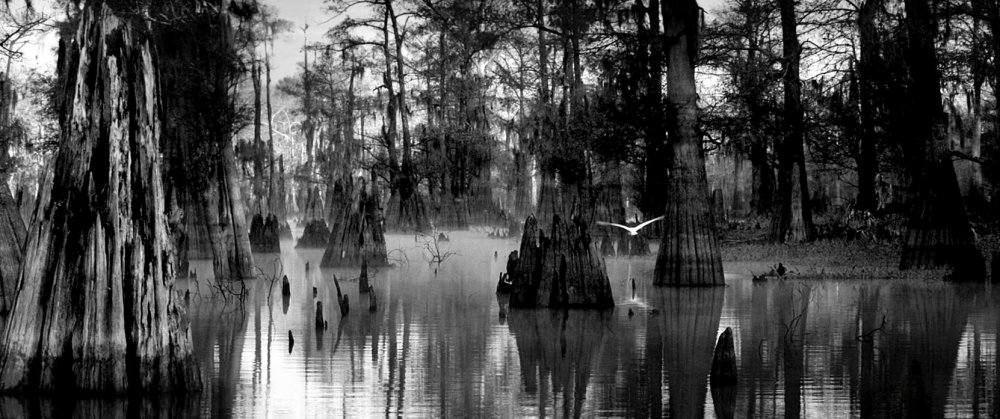
Visitors (2014)
I felt kind of weird about it, but not really responsible. Those who want to make money off culture will consume it, because they’ll consume everything. That’s the nexus of the society we’re living in. It’s the new divine.
Do those financial considerations play a part in your own process? Your films take time to make; is it important that they reach an audience?
I would love people to see the films, but their differentness from the norm makes them less accessible, they’re like small boats going upstream. It was a long journey for Koyaanisqatsi to find an audience, but it’s still out there. I’m fortunate, though, in that I don’t have to pursue a career in filmmaking; my backers or ‘angels’ are willing to make bad deals for the sake of the project.
Visitors is billed as being ‘presented’ by Steven Soderbergh. What was his role?
He’d tried a long time ago to help with the financing but it didn’t work out at that point. So when the film was finished he came to see it and said, “Looks like you’ve upped your game, Godfrey.”
He offered to help us get the movie out there, and he was as good as his word; he’s really been driving the distribution bus. I feel very fortunate and pleased by that.
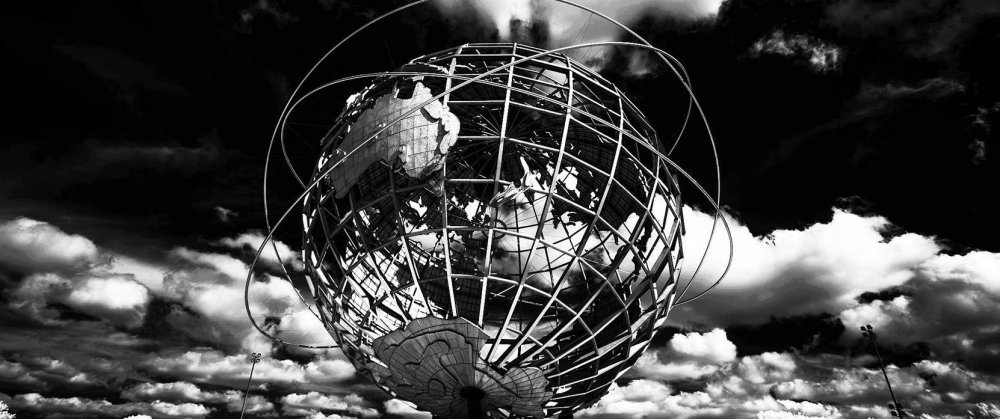
Visitors (2014)
Not all the critics have been so enthusiastic. Visitors gets described as simplistic and schematic, but they’re talking about it as a product, when your work’s really to do with the individual experience of watching the film, something that doesn’t reduce easily to a capsule review. Does that irk you?
I expect it. The film isn’t for everybody. I’m amazed it even has distribution. I can only follow my own lights, so I’m not being judgmental about those comments; it’s just that they’re often using a method of criticism for a theatrical film with all the ingredients of plot and character and applying it to a kind of cinema where that’s not relevant.
Going round with the film, I get a lot of wonderful comments from the audience: people saying that the film helped them with a quality of keeping still for themselves and offered them respite from the storm, as it were. Ultimately, I don’t do this for myself, I do it for other people, and whatever time I have left, that seems a very hopeful and rewarding way to spend it.
-
Sight & Sound: the April 2014 issue
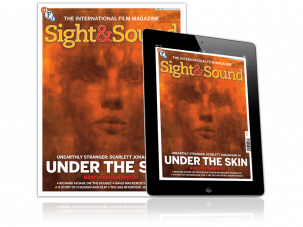
Jonathan Glazer on Under the Skin, David Mackenzie on Starred Up, Richard Ayoade on The Double, Mark Cousins on A Story of Children and Film and...
-
The Digital Edition and Archive quick link
Log in here to your digital edition and archive subscription, take a look at the packages on offer and buy a subscription.




